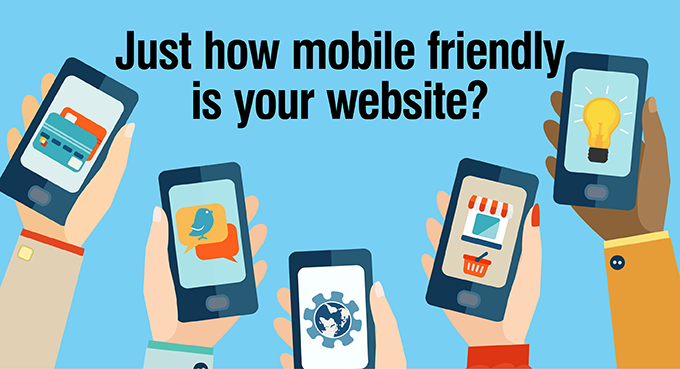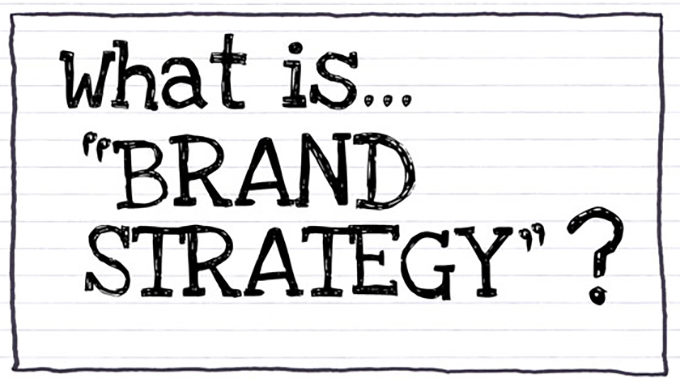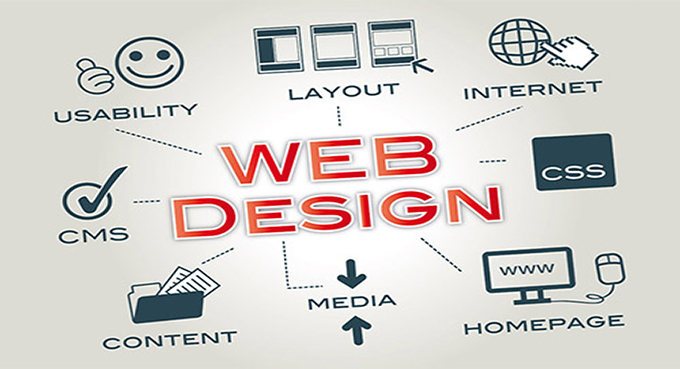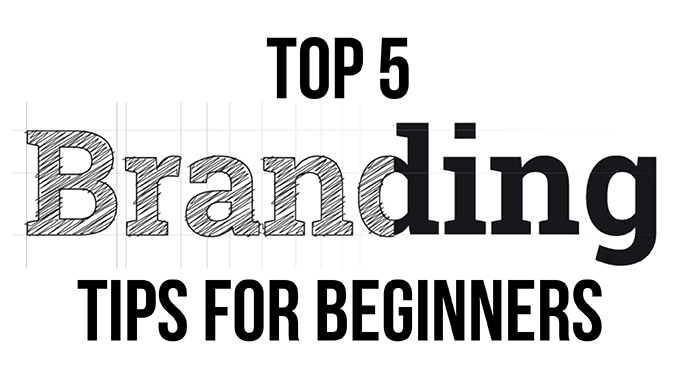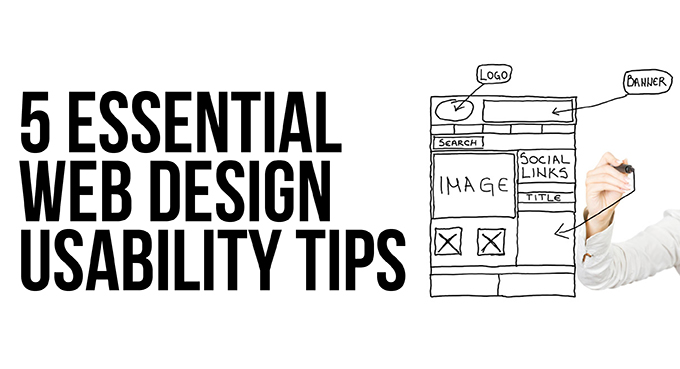4 Classic Logo Designs From Marketing History
Michelin Man: The Inflatable Poster Boy
Michelin Man, also known as Bibendum. is one of the world’s oldest trademarks. He was brought to life in 1898 by French artist O’Gallup in a series of extraordinary marketing posters featuring a rotund, cigar chomping Bibendum in a variety of outlandish situations.
In O’Gallup’s first poster, Bibendum raises a glass of champagne laced with rusty nails and broken glass, declaring a toast: ‘To Your Good Health’. It is a bizarre image, but an explanation of sorts is provided by the marketing slogan: The Michelin Tyre Drinks up Obstacles. Bibendum’s antics continue in 1935 with a short animation The birth of Bibendum. This strange and beautiful cartoon shows Michelin Man being created from a stack of tyres. He then inflates himself to enormous proportions, trashes the local town and floats into outer space where he hitches a ride back to earth on a passing comet.
Why is Michelin Man made of white tyres? Very early tyres were light in colour, it was only in 1912 that carbon black was introduced to the manufacturing process, by which time Bibendum was a well established marketing mascot. The years have been kind to Bibendum, and he is now a friendlier, slimmed down version of his former self.
Coca-Cola: Red, White and You
Nothing has more staying power than the Coca Cola logo with its timeless cursive lettering, familiar the world over since 1887. The logo uses Spencerian script, a very popular style in 19th Century America, and has changed very little over the years. The early logo incorporated the word “Trademark” in the first C swirl, but by 1941 this had disappeared. 1969 saw the appearance of the “Dynamic Ribbon”, which was redesigned in 2002 with the addition of a narrow yellow band, only to be simplified back to basics in 2005.
The Evolution of a Mermaid
The story of the enigmatic Starbucks Siren goes back to 1971 when Starbucks set up its first Coffee Shop on the Seattle waterfront. Looking for a logo to reflect the marine theme of their home city, the founders explored pictures in old seafaring books, eventually settling on a Norse woodcut of a two-tailed mermaid. The seductive siren certainly drew the eye, but a problem arose when it came time for the logo to be scaled up. A huge, naked mermaid displayed on the side of delivery trucks didn’t quite fit the brand image, and so she underwent a makeover. Her new hairdo provided cover from strategically placed long locks, and she evolved into the demure Starbucks Siren we know today.
The 3-Stripes logo
The Adidas brand was founded in the 1940s by German entrepreneur Adi Dassler. In a stroke of marketing genius he contracted his own name to coin the brandname Adidas, and registered a shoe incorporating the soon-to-be iconic 3-stripes, all on the same day in August 1949. The Adidas logo has undergone several transformations over years, shape-shifting from parallel lines to trefoil to mountain to globe, but the 3-stripes remain constant. The current logo symbolises the challenge of reaching the heights of your goals and ambition.
Seven Of The Worst Logo Designs
It can all go so horribly wrong. From the merely banal or baffling to the humongous bloopers; pitfalls abound. Some mistakes are easily made and easy to put right at the design stage. Others… well, let’s just say you have to really go the extra mile to blow it that badly.
Logo no-no’s
And so here is a choice selection of logo no-no’s for you to consider. Not all mistakes are glaringly obvious, and you might even find some of them to your liking, but that’s the colourful world logo design for you. Enjoy!
1. London 2012
Who can forget the vivid, pulsating in-your-face arrival of the London 2012 logo. From the moment it bounced sickeningly onto our screens and into our national psyche it came in for a good kicking. A headline in the Telegraph declared it ‘puerile’, even the Guardian snickered up its sleeve at the resemblance of Lisa Simpson giving a blow job. And when the Iranians threatened to pull out because they saw the word “Zion”, you’d think the designers would go quietly back to the drawing board. But love it or loathe it, the London 2012 logo stayed the course and has become one of the classic icons of recent years.
2. Kids Exchange
This one is rather unfortunate. It’s a good example of something that should have been picked up at the design stage. Running the words ‘Kids Exchange’ together like that was a serious error of judgement. Isn’t hindsight a wonderful thing?
3. Junior Jazz
Now this one takes a bit of imagination, but once you’ve noticed the naked female torso you can’t see it any other way. Given the nature of the organisation, it’s very unlikely that the illusion is deliberate. Oops!
4. Anthony Byrne
Another dubious symbol that someone should have spotted during the prototype stage. Maybe someone did see it but decided to keep schtum. It’s a bit of a balls up in any case.
5. The misplaced apostrophe
We all know what happens when an apostrophe is set out of place – it can make a huge difference to a sentence and to the way we read words. Really you’d have thought that a company like Stella Artoiswould know better.
6. Too much information
Sometimes an appealing logo design can be ruined by the addition of too much text. This Martial Arts Centre has managed to cram the full name of the business and list its services all in one little logo. Is that really a good idea? Your message should be clear, concise and simple – not require your customers to turn their heads 380 degrees to read your logo.
7. Choose your font wisely
You think you’re saying one thing, but choose the wrong font and your message can take on a whole new meaning. This is what we mean when we say that your logo should be readable both when it’s small and when it’s blown up. See examples of all sizes to see how the text works or you’ll end up making a faux pas yourself, just like the Wig and Pen pub did.
Speaking of fonts, there is one particular font to be avoided at all costs. Take a look at these famous logos changed to Comic Sans. Eww!
So if you think that designing your own logo is a doddle, you’d better think again. The art of logo design requires a combination of technical skill and creative flair. You will want your logo to be memorable for all the right reasons so it’s worth taking the time and trouble to get it right. Invest in a professional designer with a track record in successful logo design to create a logo that will make you proud.
Just How Mobile Friendly Is Your Website?
Towards the end of 2014, there was a flurry of excitement on the blogosphere when Google announced the launch of its Mobile-Friendly Test Tool. True to form, Google has made the test tool a doddle to use: simply type in your URL and the GoogleBot will analyse the site and let you know if your website has a mobile-friendly design. If your site get the thumbs up, then woohoo! Not only will you earn one of Google’s mobile-friendly tags but there are hints that Google is planning to give mobile-friendly sites more weight within its ranking algorithm providing a welcome boost for your site.
What if Your Site Fails?
If your website fails the test, don’t despair. The GoogleBot analyzer generates a mini-report which looks something like this. Here are four of the most common problems picked up by the GoogleBot Mobile-Friendly Test.
Text Too Small
Many smartphones have a screen the size of a playing card, so pay a thought to how your customers will read the text on your site without getting eye strain. It’s surprising how many websites have this problem, but luckily it’s an easy one to fix. Google has provided guidelines about legible font sizes – the recommendation is a base font size of 16 CSS pixels.
Links Too Small and Close Together
Mobile devices rely upon tap targets rather than mouse clicks. Small and tightly packed targets are a huge source of irritation to customers with clumsy fingers who jab at the screen, accidentally tapping links they have no intention of opening. Bear in mind that the average adult finger pad is reckoned to be around 10mm wide, and Google recommends a tap-target of at least 7mm. To find out more about how to fix the problem and pass the GoogleBot mobile-friendly test, visit the advice page on how to Size Tap Targets Appropriately.
Mobile Viewport Not Set
If your webpage looks fine on your desktop, but all screwy on a mobile, it is likely that there is a problem with the viewport. This controls the width and scale of a webpage on different devices, so it is very important to make sure that it is configured. If you’ve never heard of a viewport before, Google provides an excellent explanation on its guidance page Configure the Viewport.
Content Wider Than Screen
The GoogleBot Test Tool checks to make sure that users don’t have scroll sideways or zoom to view the content on your site.Visitors to your website are unlikely to bother with content that falls outside the edge of the screen, so the advice from Google is clear: Make it Responsive.
The Way Forward: Responsive Web Design
To fix the problems and create a flexible layout to suit all screen sizes on a range of devices from a smartphone to a mega-screen TV, Google recommends using Responsive Web Design (RWD). This may sound like a daunting challenge, so if the task is beyond your capabilities it’s worth seeking advice from a professional designer.
Don’t miss out: deliver a mobile-friendly website your customers will return to time and again.
Why Do You Need A Branding Strategy?
How Wearing a Grey T-shirt can Get People Talking
Facebook CEO Mark Zuckerberg has become one of the most recognised figures of modern times. A young, dynamic, entrepreneur with the whole world at his feet, dressed in that signature grey t-shirt, occasionally set off by a fetching zip-up hoodie.
When asked about his resolute attachment to the grey t-shirt at a recent Q&A session, his response was sober and cautious. He assured the audience that he didn’t have energy to waste on anything as frivolous as choosing what to wear in the morning – he needs all his energy to devote to his work.
But Robin Wight from the Communications Group Engine, is not convinced. He thinks that Zuckerberg’s uniform of choice points to one thing: Branding Strategy. “Brands need to show continuity, and Mark Zuckerberg is very much part of the Facebook brand,” he says. So, like Steve Jobs before him, Mark Zuckerberg has cannily adopted a consistent dress code in order to promote his brand.
Branding is Communication
The grey t-shirt uniform is just one example of how there is more to branding than simply designing a corporate logo and sticking it on everything. An effective branding strategy will help you connect with your customers and make your business grow. Once your strategy is in place, it can be put straight to work, pulling in customers and keeping them loyal.
Three Reasons for Developing a Branding Strategy
1. Focus
The day-to-day responsibilities of setting up and running a business will inevitably place many demands on your time and energy. Somewhere along the way there is a good chance that you will become swept up in it all and lose sight of the bigger picture. Taking a step back to focus on the key messages you need to communicate to your customers can revitalise your business and really pay dividends.
2. Get yourself noticed
Your brand is what sets you apart from your competitors. Customers will soon get to know your business through your branding, and if you get it right they will learn to pick you out from the competition, just as a familiar face stands out from the crowd.
3. Connect with your core customers and attract new ones
Once you have tested your strategy and know that it’s working, it’s important to keep your branding solid and consistent to ensure that it becomes established. Pay attention to details such as logo placement, tag line, colour scheme and choice of font.
As you gain confidence in your branding strategy, you will be able to use it in new ways to reach new customers For example, social networking sites such as Facebook, Twitter and Pinterest can be used to spread the word about what your business has to offer. If the whole concept of social media leaves you bewildered, the Dummies Cheat Sheet: Using Social Media to Promote your Business is a good place to start.
Developing your branding strategy can be fun and stimulating way to grow your business. Get it right and it will deliver for you in the long run… and don’t worry, it won’t mean you have to fill your wardrobe with grey T-shirts.
5 Vital Logo Design Tips
Your logo matters, it is the face of your brand. Designing a logo that has impact and delivers the right message is a creative process requiring both technical knowledge and an artistic touch. Here are five design pointers for you to chew over.
1. Preparation
The first step in its development is to do the groundwork. Consider your target audience – what type of people do you need to attract? Whether they are tech-savvy teenagers or steam-age pensioners, high-flying professionals or first time mums you’ll need to bear them in mind when developing your logo. Aim your design at the right audience and it will inspire trust and loyalty to your brand. Get it wrong and your logo will flop.
2. Choose colours and fonts wisely
Different colours manipulate our emotions in different ways and can strongly influence how we feel about a brand. Compare the busy, vibrant colours of the London 2012 logo with the cool blue and white simplicity of technology giant HP. The same goes for the choice of font – different styles of font are carefully crafted to give very different messages. Be aware thatyour logo needs to both draw in customers and convey the right message about your brand. The combination of options is staggering, but in skilful hands the correct choice of colours and font can be used very effectively to appeal to your customers.
3. Dare to be distinctive – Make that logo your own
You want your logo to speak for your business, to be recognised and stand out from the competition. You might think it best to keep things simple, but play it too safe and you will end up with a logo that is uninspired, unmemorable and unloved. It takes a designer with experience, technical ability and creative flair to craft a unique, distinctive look that will engage your customers and keep them coming back.
4. Make it flexible
Think about how your logo will be used – on promotional material such as flyers and leaflets, on websites and social media… it may even need to be giant size for posters and billboards. If your logo will be viewed mainly at phones and tablets, it’s worth checking it out on a small screen. Your design might have to look good scaled from tiny to humongous and this will need to be thoroughly tested at the design stage – get it wrong and it could be back to the drawing board.
5. Test it out
Once you have developed your prototype logo, it’s really important to run it by different people and gauge their reaction. Something that looks good to you might be very different to the eyes of your target audience. Any useful feedback you receive can then be incorporated into the design – far better than being stuck with an unsuitable logo or having to scrap the whole thing and start over.
Your logo is an vital part of your brand identity. Get the design right and it will go straight to work, providing loyal and trusty service for you and your business.
Five Simple Tips For A Successful Website
How do your customers find you? Chances are, their first port of call will be your website. This gives you the perfect opportunity to connect with your customers by designing a website they will enjoy. Here are five simple tips to help you on your way.
1. Make it Central to your Branding Strategy
Take a look at these two sites: Vogue and TeenVogue. You’ll see immediately that they have been branded differently to appeal to two distinct groups of customer. It’s important to design your site to attract your target audience, but there are a few basic principles to follow when it comes to the overall organisation and appearance of your website.
Start with your logo: It should be given a prominent position and appear in the same header spot on all your pages. A high resolution image that links to your homepage will help customers get to know your logo and easily navigate your site.
Next, pay attention to the colour scheme and font choice as these will set the tone and character of your website. Consistency is the key. Customers will get to know you through your branding, so once you have a found a style that works, make sure you stick to it for all your web pages.
2. Include the Essentials
This is a really simple thing to get right, but it is so often overlooked. Compile a list all the things you want your customers to find easily from your website: for example your contact details, opening times and how to place an order. Ask around your employees and customers to find out what they think – you might be surprised by what they consider to be must-haves on your site. Make your navigation and links prominent and intuitive. If visitors to your website feel at ease and in control, you can be confident that your website is working for you to establish customer trust and brand loyalty.
3. Use Quality Content
Just as blinking images and visual overload can make users click away, so too can being faced with a solid wall of badly organised text. Focus on the information that you want your target audience to absorb and consider how the text appears on the screen – is it visually inviting? Adding fresh content to your site can be a great way to keep visitors returning, but make sure you keep eye-strain to a minimum.
4. Cut out the Clutter
Bells and whistles are out, sleek elegance and simplicity is in. The demise of Adobe Flash, aided along by the Occupy Flash movement, has helped turn the tide against excessive visual bling. So, give your content breathing space, and keep to a standard layout.
and finally…
5. Make it Responsive
This tip might seem not-so-simple, but the ever accelerating trend towards mobile technology means that your website must seamlessly adapt to any device and any screen size. The way forward is to build your site using Responsive Web Design (RWD). If you feel that building your own site is beyond your capability, get help from the experts: Invest in a professional web designer.
Branding Tips For Beginners
Branding Tips For Beginners
Ever heard of BackRub? Established in 1996 as a cutting edge search engine, BackRub checked the number of back-links to a website in order to rank its importance. This preliminary brand name, along with its alarmingly literal BackRub logo, didn’t last long. In one of the most inspired branding revamps of all time, the founders of BackRub changed the name to Google, and the rest is history.
Establishing your Brand
The concept of branding may sound like an airy fairy notion, far removed from the nuts and bolts reality of running a small business – all well and good for big players with big marketing budgets, but way down the list of priorities for a small firm with a million and one more pressing demands. So, why care about branding?
Branding is Reputation
You might not realise it, but your business already has a brand. Branding is reputation. If you consider your reputation to be important, and if you have put time and effort into building up your business reputation, then branding matters to you. It is through branding that you will secure customer trust and loyalty and attract new customers to grow your business.
It’s worth taking the time to focus on your business by putting together a brand plan. Involve your staff – brainstorm ideas, encourage creativity, make it fun so everyone they feels included and valued.
First Impressions
It may be an old cliche, but first impressions really do count. Think about the routes by which potential customers find you – it could be that they walk in off the street or look you up in Yellow Pages, but it’s more likely these days that they’ll find you via your website or even an external website such as Trip Advisor. Make sure you understand all the ways customers get to know about your business – their first experience is all part and parcel of your brand image.
What Makes You So Special?
Distinctive branding will set your business apart from the competition, strengthen your identity and encourage customer loyalty. Take a look at your logo. Customers will get to know you through your logo, so make sure it is unique, attractive and professional. Do you have a tag line? A snappy one-liner that sums up the essence of your business can give your brand focus even if you decide not to use it in the end.
Define your company values. Core values that chime with those of your customers will help establish an emotional connection to your brand. Encourage feedback from your customers and promote the values that you know you have in common. Establishing a connection and building up trust will generate repeat custom and bring in new customers through word of mouth.
Be True to Your Brand
Finally, keep your branding consistent. Once your brand is established and you know it is working well, don’t be tempted to chop and change. Successful branding takes time to develop, so stay true to your brand, give it chance to grow and it is certain to help you deliver the goods.
Five Essential Web Design Usability Tips
Web Usability is a clunky phrase meaning ‘ease of use’ of a website. Get it right and your website will encourage brand loyalty and trust by giving visitors an experience that makes them feel smart and in control. Get it wrong and that trust will evaporate as they struggle with a frustrating website that brings on feelings of incompetence. Here are five usability tips to consider.
1. Build in Usability From the Start
Imagine you are one of your own customers visiting the website for the first time. What are you looking for? It might be something very straightforward like the opening times of your shop or a contact phone number, or it might be something more involved such as placing an online order. Draw up a check-list of the information you want your customers to access quickly and easily from your website. Usability starts with understanding your target audience – always bear them in mind while designing your website.
2. Surface Simplicity
Straightforward links and clear pathways to key content on your website will enable the visitor to feel in control. Don’t try to be clever – follow the accepted conventions, such as using blue for text links – if your visitors become lost and disorientated, they won’t stick around. As luck would have it, the vast majority of visitors to your website will already be adept at tracking down the information they need. Eye tracking studies show that users browse content in seconds, scanning the site for useful links to click. The downside of this predictable search pattern is that the slightest hitch or frustration could well push potential customers into clicking away from your website.
3. Mobile Optimisation
With the introduction of Google’s mobile friendly search tags, optimising your website for smartphones and tablets has become a no-brainer. Bear in mind that mobile devices rely on touch-targets rather than mouse clicks. Small, tightly packed touch-targets are the cause of accidental clicks and can be hugely irritating. Large, well spaced targets will make life easier for your customers. Try Google’s quick and easy Mobile Friendly Test to find out if your website makes the grade.
4. Cut Out the Curses
We’ve all been there: Swarms of blinking images, links that look promising but take you on a wild goose chase, unreadable text against a funky background, annoying pop-ups… all guaranteed to raise the hackles and drive customers away. And if you think all that razzmatazz is a sure-fire way of grabbing attention, think again. Regular internet users quickly develop banner blindness, a skill that helps them filter out the noise from visual clutter and enables them to focus on what is important.
5. Test Early, Test Often.
Finally, make sure you test your site on different devices and different browsers – it may all work fine on your machine, but that doesn’t mean it will work for everyone. Getting valuable feedback from potential customers will give you a chance to put things right, so it is important to start testing early in the development stage and at regular intervals right through to launch.
What Your Font Says About You
Meet Cracked Johnnie. He’s a bit of an animal, wild and anarchic. And here’s Moonbeam, soft and gentle with a hint of quiet sophistication. Then there’s Little Lord Fontleroy, fancy and high falutin’ just as you’d expect.
The Fonts You Choose are like the Company You Keep.
Fonts really are like people, they each have their own individual style and spirit. So, Cracked Johnnie would go down a storm at your upcoming mad bash, but you probably wouldn’t want him around when you’re dining with your in-laws. Try leaving Little Lord Fontleroy at the local high school, and he’d be having his head flushed in the toilet during the very first break time.
There are more than 100,000 fonts to choose from – this gives you a massive amount of artistic freedom, but such a dizzying multitude can soon send you screwball. When it comes to selecting a particular font, it’s worth putting some thought into the impression you want to make on your target audience. For example, the professional networking site LinkedIn has based its logo on the very business-like, no nonsense font Myriad Bold, whereas the Twitter logo is based on the fun and friendly Pico Alphabet.
It might also help to think about fonts as belonging to different families. So for a nostalgic feel, you could choose a font from the Retro family; for an edgy mood, go for a Graffiti font, and if you want a combative flavour, try an Military font.
How Your Font Could be a Tattle-Tale
In the same way that some companies hire a graphologist to analyse handwriting to determine the personality and character traits of the writer, it is now likely that your choice of fonts will also come under scrutiny. Most word processing applications have a super safe go-to font such as Times New Roman or Arial, but what message are you giving if you stick with such a font? You may feel that it gives a dependable air of integrity, on the other hand it could give the impression that you are boring, stuffy and timid. Oh, and a word about Cambria, the post-2007 Microsoft go-to font. Stick with Cambria and you’re telling the world that you are oblivious to the whole concept of font selection and you are simply hostage to the default.
Cracked Johnnie on your CV will send a very definite message about you to your potential employer, just as a obituary in Comic Sans is not likely to go down well with the bereaved. There is a time and a place for unbridled creativity, you also need to know when it’s best to rein it in and tone things down.
Get to Know Your Fonts
With so many fonts out there, it’s no wonder that choice of font has become a whole art form in its own right. Try getting to know your fonts – test them out, see how they behave, give them space to play, be adventurous. Go on, have a blast!
5 Vital Logo Design Tips
Your logo matters, it is the face of your brand. Designing a logo that has impact and delivers the right message is a creative process requiring both technical knowledge and an artistic touch. Here are five design pointers for you to chew over.
1. Preparation
The first step in its development is to do the groundwork. Consider your target audience – what type of people do you need to attract? Whether they are tech-savvy teenagers or steam-age pensioners, high-flying professionals or first time mums you’ll need to bear them in mind when developing your logo. Aim your design at the right audience and it will inspire trust and loyalty to your brand. Get it wrong and your logo will flop.
2. Choose colours and fonts wisely
Different colours manipulate our emotions in different ways and can strongly influence how we feel about a brand. Compare the busy, vibrant colours of the London 2012 logo with the cool blue and white simplicity of technology giant HP. The same goes for the choice of font – different styles of font are carefully crafted to give very different messages. Be aware thatyour logo needs to both draw in customers and convey the right message about your brand. The combination of options is staggering, but in skilful hands the correct choice of colours and font can be used very effectively to appeal to your customers.
3. Dare to be distinctive – Make that logo your own
You want your logo to speak for your business, to be recognised and stand out from the competition. You might think it best to keep things simple, but play it too safe and you will end up with a logo that is uninspired, unmemorable and unloved. It takes a designer with experience, technical ability and creative flair to craft a unique, distinctive look that will engage your customers and keep them coming back.
4. Make it flexible
Think about how your logo will be used – on promotional material such as flyers and leaflets, on websites and social media… it may even need to be giant size for posters and billboards. If your logo will be viewed mainly at phones and tablets, it’s worth checking it out on a small screen. Your design might have to look good scaled from tiny to humongous and this will need to be thoroughly tested at the design stage – get it wrong and it could be back to the drawing board.
5. Test it out
Once you have developed your prototype logo, it’s really important to run it by different people and gauge their reaction. Something that looks good to you might be very different to the eyes of your target audience. Any useful feedback you receive can then be incorporated into the design – far better than being stuck with an unsuitable logo or having to scrap the whole thing and start over.
Your logo is an vital part of your brand identity. Get the design right and it will go straight to work, providing loyal and trusty service for you and your business.


